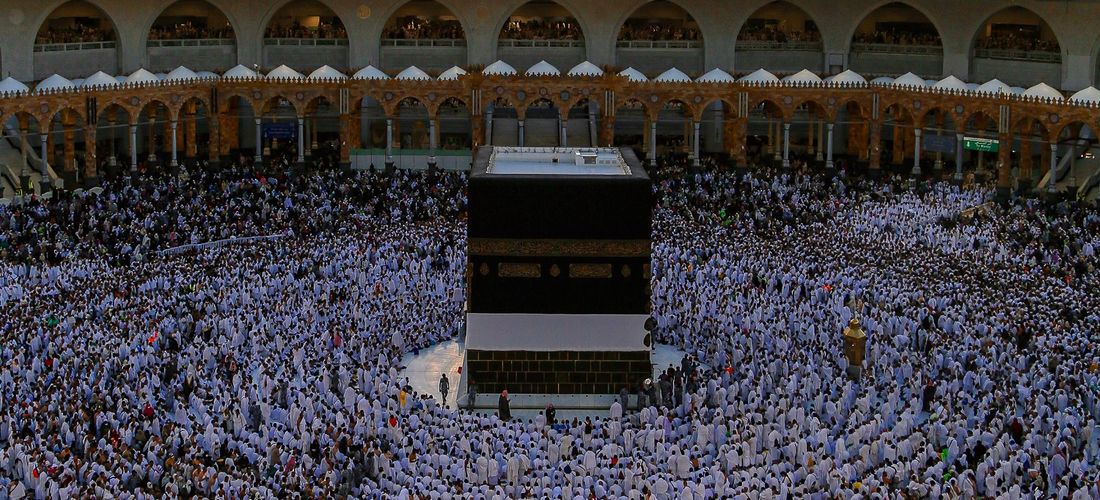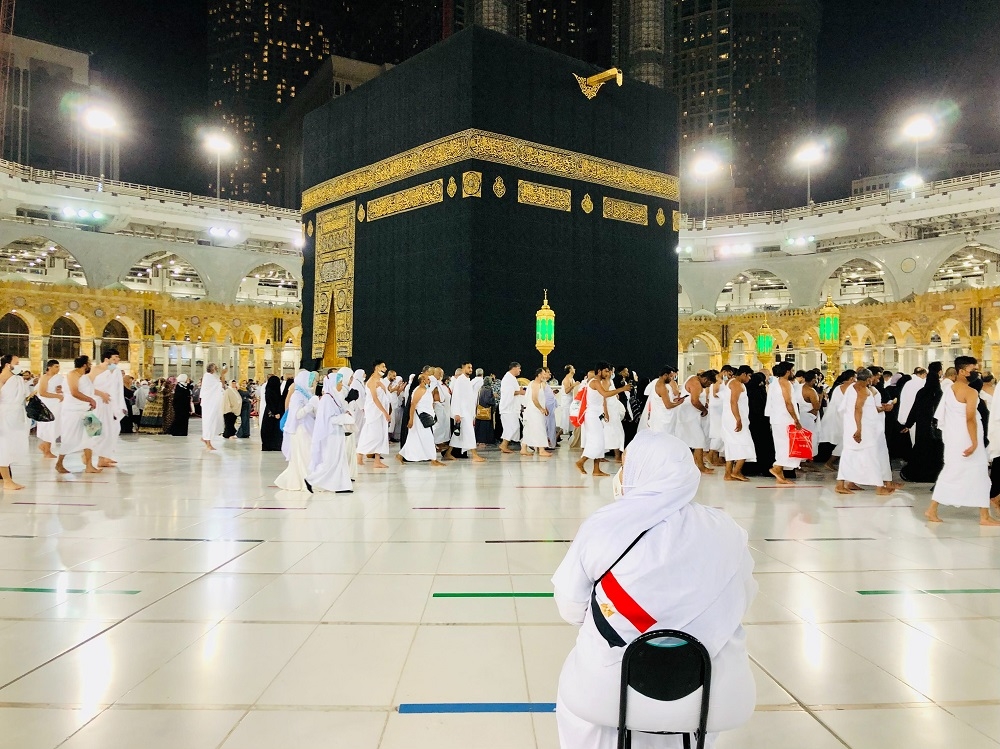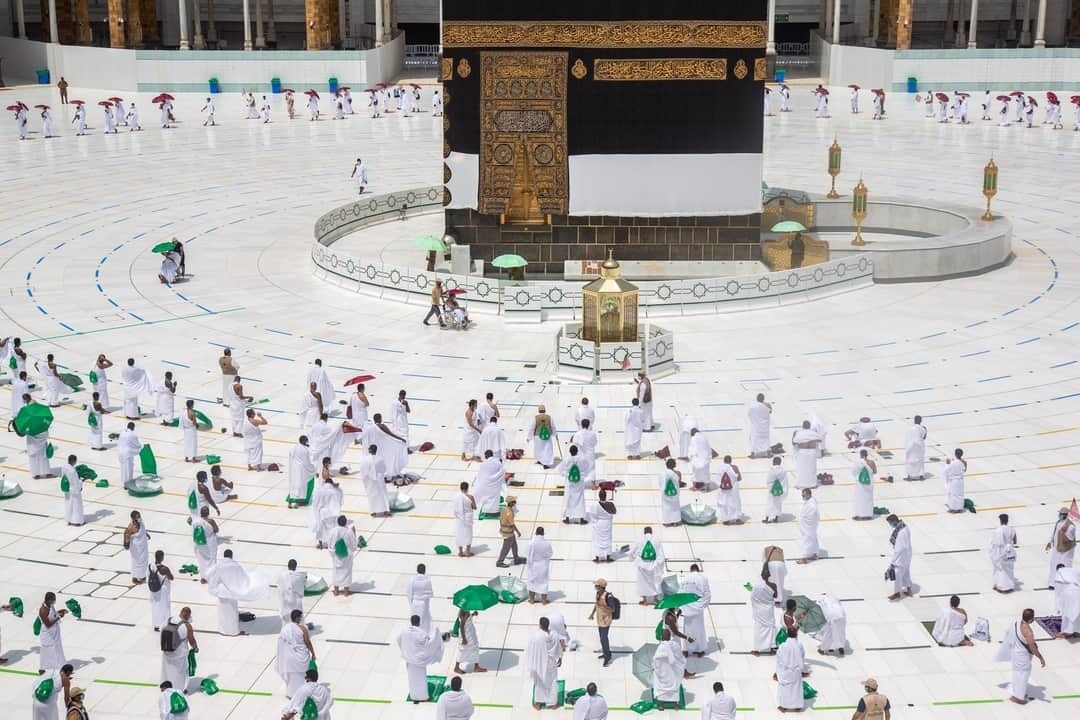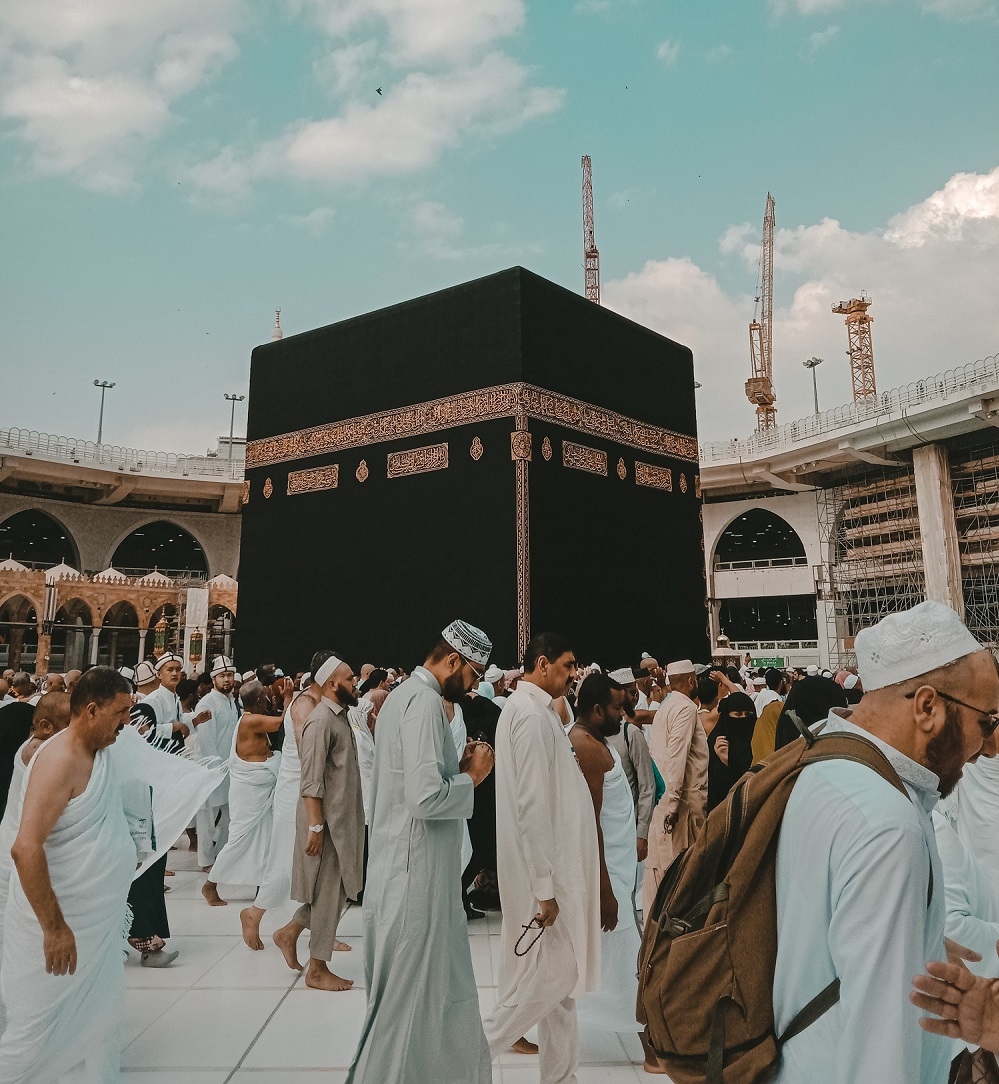Umrah 101 – A Guide to Everything You Want to Know About Performing Umrah
Faith
|
Dec 14, 2023
|
10 MIN READ

Image source: Pexels; photo by Sultan
Have you ever performed Umrah? If you’ve never performed Umrah or Hajj, the steps and rituals can seem confusing. Umrah, however, it isn’t as complicated as you may think. Think of Umrah as a mini Hajj!
Many Muslims strive to perform Umrah at least once. And while Hajj is fard (obligatory) for all physically and financially-abled Muslims once in their lifetime, Umrah is not fard, depending on what school of thought you ascribe to.
In the Hanafi and Maliki schools of thought, Umrah is not fard (obligatory), it is considered a Sunnah Mu’akkadah (emphasized sunnah). The other two schools of thought, Shafi’i and Hanbali, consider it obligatory like Hajj. Learn more about whether Umrah is obligatory here.
And, as with many things regarding faith, you can find a variety of opinions from scholars on this. We’re not here to advise you on if it’s obligatory or not. We’re here to breakdown how to perform Umrah into digestible bites of info. So, let’s get into it!
Virtues of Umrah
Regardless of the school of thought you follow, there are endless benefits and blessings to performing Umrah.
Abu Hurairah narrates: Allah’s (S) Messenger (saw) said, “(The performance of) Umrah is an expiation for the sins committed (between it and the previous one). And the reward of Hajj Mabrur (the one accepted by Allah) is nothing except Paradise.”
[Narrated in Sahih al-Bukhari]
[Narrated in Sahih al-Bukhari]
It was also narrated from Abu Hurairah, that the Messenger of Allah (saw) said, “The pilgrims performing Hajj and Umrah are a delegation to Allah (S). If they call upon Him, He will answer them; and if they ask for His forgiveness, He will forgive them.”
[Narrated in Sunan Ibn Majah]
[Narrated in Sunan Ibn Majah]
And the Messenger of Allah (saw) said, “Perform Hajj and Umrah consecutively; for they remove poverty and sin as the furnace removes impurity from iron.
[Narrated in Sunan al-Nasa’i]
[Narrated in Sunan al-Nasa’i]
Types of Umrah

Image source: Pexels
There are two types of Umrah that can be performed.
1. Umrah Al-Mufradah: This type of Umrah is performed at any point throughout the year and is independent of Hajj. This type of Umrah cannot be performed during the days of Hajj. And although it can be performed at any time, Umrah during the month of Ramadan is highly recommended. The Messenger of Allah (saw) said to a woman from among the Ansar, “When it is Ramadan, perform Umrah then, for Umrah during it is equivalent to Hajj.”
[Narrated in Sunan an-Nasa’i]
[Narrated in Sunan an-Nasa’i]
2. Umrah Al-Tamattu: This type of Umrah is performed in the month of Dhul Hijjah just before the beginning of Hajj. It is the most common type of Umrah during the Hajj season. Hajj Al -Tamattu is the name of the Hajj that is performed in this fashion.
Conditions of Umrah
In order to perform both Hajj and Umrah, there are certain criteria that need to be met for the pilgrimage to be accepted. These conditions are the same for Hajj and Umrah.
1. Islam must be your religion: These spiritual obligations are only permissible for Muslims to fulfill.
2. Maturity: Children can perform Umrah, but it isn’t incumbent upon them, like fasting or prayer isn’t incumbent upon them. Certainly it’s great to take children and show them the beauty of Umrah, Makkah and Madinah. But the reward you receive and the obligations you fulfill for doing Umrah happen when you reach and pass the age of puberty.
3. Sanity: You must have full control of your mental abilities.
4. Financially able: You must be able to afford the journey and all that expenses that come with travel and stay without going into debt. You must also have sufficient funds to support any family members or people you are responsible for at home.

Muhsen helps disabled Muslims perform Umrah. Image source: Muhsen.
5. Physically able: You must be in good health to carry out the rites of Umrah.
6. Transport: You must have access to travel to Makkah in a safe and affordable manner.
7. Mahram: Women must be accompanied by their mahram. A mahram is a man in the family that is prohibited to marry the woman due to their blood relationship. A brother, father, son, brothers through breastfeeding, uncle, and father-in-law. A woman’s husband is also her Mahram. While the government of Saudi Arabia has lifted the rule on women needing a mahram to perform Umrah or Hajj, this is an Islamic requirement upon which Islamic scholars have a variety of opinions.
(What should you pack for an Umrah trip? We’ve put together a comprehensive list after interviewing several women who recently performed Umrah and doing additional research!)
The Pillars of Umrah
Ok, now let’s talk about what you need for Umrah and how to actually do it.
1. Ihram: Ihram refers to the state of purity that is required before entering the perimeter of Makkah. This state entails certain prohibitions that the pilgrim must abide by for the time they are performing Umrah. The state of Ihram is broken once the rituals of the minor pilgrimage is complete and the hair is clipped, the final pillar of Umrah. The two-piece unstitched white garment worn by men and the clothing women wear is also referred to as Ihram.
Before traveling, the pilgrim should perform ghusl or wudu, clip their nails, and remove one's underarm and pubic hair. The idea is to physically purify yourself before embarking on the journey of Umrah. Pilgrims will wear their Ihram garments before crossing the Miqat.

Male pilgrims wear their Ihram; image source: Pexels; photo by Mohammed Khawar Nazir.
It is from the sunnah to perform two rakah’s before entering the state of Ihram. It is recommended to recite Surah Al-Kafirun in the first rakah, and Surah Al-Ikhlas in the second. Once you have approached the miqat (the boundary from which you need to be in a physical and mental state of Ihram for Umrah) or have gotten near the location, whether by plane or in person, renew and make your Umrah intention. It is recommended to make your niyyah, or intention, verbally and internally. You can say one of these versions of the intention:
- “ Oh Allah, here I am to perform Umrah.”
- “Oh Allah, I intend to perform Umrah.”
- “Oh Allah, I intend to perform Umrah, so accept it from me and make it easy for me.”
- For the transliteration and Arabic text, click here.
After announcing your niyyah, it is important to recite the Talbiyah. Failure to recite the Talbiyah will result in an invalid Umrah. Once the Talbiyah is recited, you are now in the state of Ihram and are referred to as a Muhrim. It’s important to be aware of the violations and penalties of the Ihram while being a Muhrim. If your Ihram is violated there are religious penalties that you must fulfill.
Recite the Talbiyah as much as possible as you head to the Ka’ba to make tawaf, but when you begin to make your tawaf and perform sa’i, you don’t recite the Talbiyah. More on that below.
Now you are ready to perform the steps of Umrah. As you approach Makkah, and Masjid Al-Haram, the limits of the masjid that extend beyond and around the Ka’ba, it is recommended to repeat the Talbiyah, do dhikr, and constantly send blessings and prayers upon the Prophet (saw). Once you enter Masjid Al-Haram, it is encouraged to recite the following du’a and enter with your right foot:
- “Oh Allah, this is Your sanctuary and security, so make me unlawful to Hell-Fire, make me safe from Your punishment on the day You resurrect Your servants, and make me one of Your friends and one of the people who obey You.”
- “In the name of Allah, send prayers upon Muhammad (saw). Oh Allah, forgive me and open for me the doors of Your mercy.”
- “I seek protection in Allah the Tremendous, His Noble Countenance, and His pre-eternal Sovereign Might from Shaytan the rejected.” For the transliteration and Arabic text, click here.

Making tawaf around the Ka'ba during COVID times; image source: Twitter.
When you see the Ka’ba for the first time, it is recommended to make sincere du’a. This is a special time and place where du’a is accepted. Don’t forget to send countless peace and blessings upon the Prophet as well. It is also encouraged to recite the following dhikr, du’a and tasbeeh three times:
- “Allah is the Greatest, Allah is the Greatest. There is no God except Allah.”
- “Allah, increase this House in honor, esteem, respect and reverence. And increase those who honor and respect it, of those who perform Hajj or Umrah, in honor, respect, esteem and piety.”
- “Oh Allah, You are Peace and from You is peace. Make us live, Lord, in peace.” For the transliteration and Arabic text, click here.
Allah, increase this House in honor, esteem, respect and reverence. And increase those who honor and respect it – of those who perform Hajj or ‘Umrah – in honor, respect, esteem and piety.
2. Tawaf Al-Umrah: Tawaf is the action of walking around the Kaaba seven times, counter clockwise. There are several conditions that need to be met in order for your tawaf to be valid. Please go over them here. To start making tawaf, make sure you’re in a state of wudu, make your intention. “Oh Allah, I intend to perform Tawaf of your Sacred House, so make it easy for me and accept it from me.” For the transliteration and Arabic text, click here.
Begin at the corner of the Ka’ba where the black rock, Hajar Al-Aswad, is mounted. Make sure that the Ka’ba is to your left. Be cautious not to walk through Hijr Ismail as this will void your circuit. You will need to repeat that round if this happens.
You can recite this du’a, “In the name of Allah, Allah is the greatest. Oh Allah, out of faith in You, conviction in Your book, in fulfillment of Your covenant and in emulation of Your Prophet’s Sunnah.” For the transliteration and Arabic text, click here.
You can also say any form du’a such as Tahlil ( la ilaha illa Allah) or send blessings and peace, Salawat, upon the Prophet.
During your seven rounds of Tawaf, take advantage of making any and all of the du’a you ever wished to make. This is a sacred place and one in which du’a is answered, whether in this life or the next. Make sincere, heartfelt du’a in the language you are most comfortable with. Never underestimate the power of your du’a, and do not be shy in asking Allah (S) for anything your heart desires.
3.Sa’i: Sa’i refers to the ritual of walking back and forth between the two hills of Safa and Marwa in honor of our mother, Hajar (ra), who did this while searching for water for her baby, Prophet Ismail (as). This is performed in seven rounds just like the Tawaf. Be sure to brace yourself and not over-tire yourself during this rite of Umrah. Taking breaks is encouraged if you feel tired. There are some conditions for the Sa’i to be valid, read them here.

Image source: Pexels; photo by Taha Elahi.
Start by approaching the hill of Safa and say the following verse and intention once before you begin your seven laps of Sa’i. You do not need to repeat them before each lap:
- “Indeed, Safa and Marwa are from the Signs of Allah.” [2:158]
- “I begin with that which Allah has begun with.” For the transliteration and Arabic text, click here.
When you reach Safa, face the Ka’ba and make du’a, takbir (Allahu Akbar), tahlil (la ilaha illa Allah), and send Salawat (peace and blessings) upon the Prophet (saw). It is sunnah to recite the following du’a a total of three times while making your own supplications in between each.
- “Allah is the greatest; Allah is the greatest; Allah is the greatest, and to Allah belongs all praise.”
- “There is no deity except Allah, alone without a partner. To Him belongs the Dominion, and to Him belongs all praise. He gives life and death, and He has power over everything.”
- “There is no deity except Allah alone. He fulfilled His promise, supported His slave and defeated the Confederates alone.” For the transliteration and Arabic text, click here.
Make your way to Marwa, while continuing to make your own du’a. Once you have reached Marwa, you have completed your first lap. Continue walking back and forth between Safa and Marwa seven times. You will end your seventh lap in Marwa. This completes the end of Sa’i.
After completing your Sa’i, pray two rakah sunnah and leave Masjid Al-Haram. Leave the masjid with your left foot and recite the following du'a,
- “In the name of Allah, and peace and blessings be upon the Messenger of Allah. Oh Allah, I ask for Your bounty.” For the transliteration and Arabic text, click here.
4. Halq or Taqsir: After performing Tawaf, Sa;i and your two rakah sunnah, In order to end the state of Ihram, you must shave (Halq) or trim (Taqsir) your hair by at least one inch. It is common and more virtuous for men to shave their head completely. Women should only trim their hair. You can do this step alone or go to a licensed barber in Makkah.
This concludes your Umrah, Mubarak! You are now free from the rules and restrictions of Umrah and are able to change into your usual clothing and attire. If you wish to perform another Umrah during the same visit, you must enter into the state of Ihram again from one of the designated locations of Miqat. Masjid Aisha, is the closest and most common place that is near Masjid Al-Haram in Makkah.
If you or anyone you know are planning to embark on their journey to Umrah, I hope that this guide was helpful and useful. While I covered the main steps and information, I encourage everyone to check out The Hajj and Umrah Planner website. It is an excellent resource that goes into detailed step by step instructions on how to perform Umrah and Hajj.
May Allah (S) grant us all the opportunity to fulfill our religious obligation in the best health and security. Ameen.
Subscribe to be the first to know about new product releases, styling ideas and more.
What products are you interested in?


